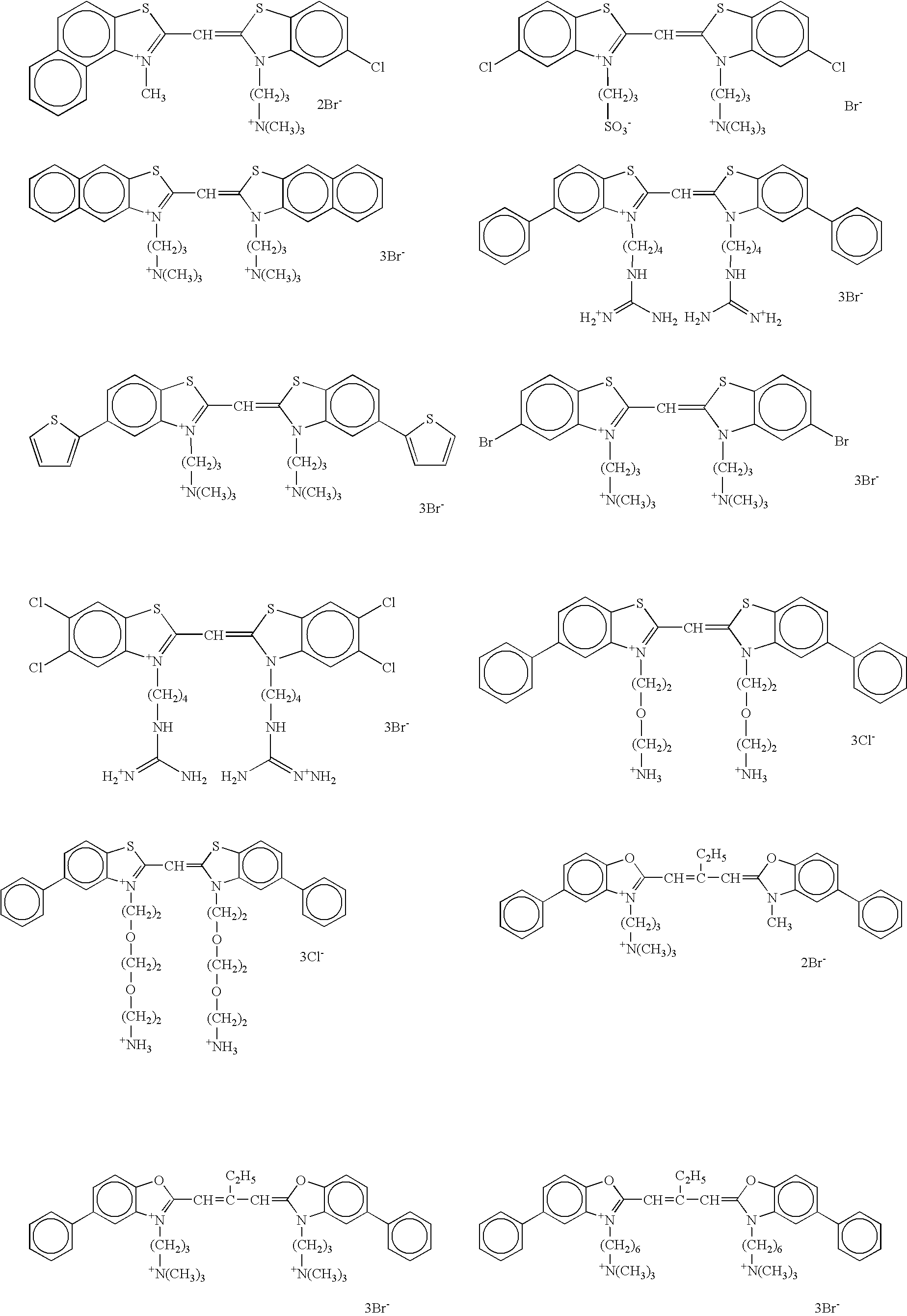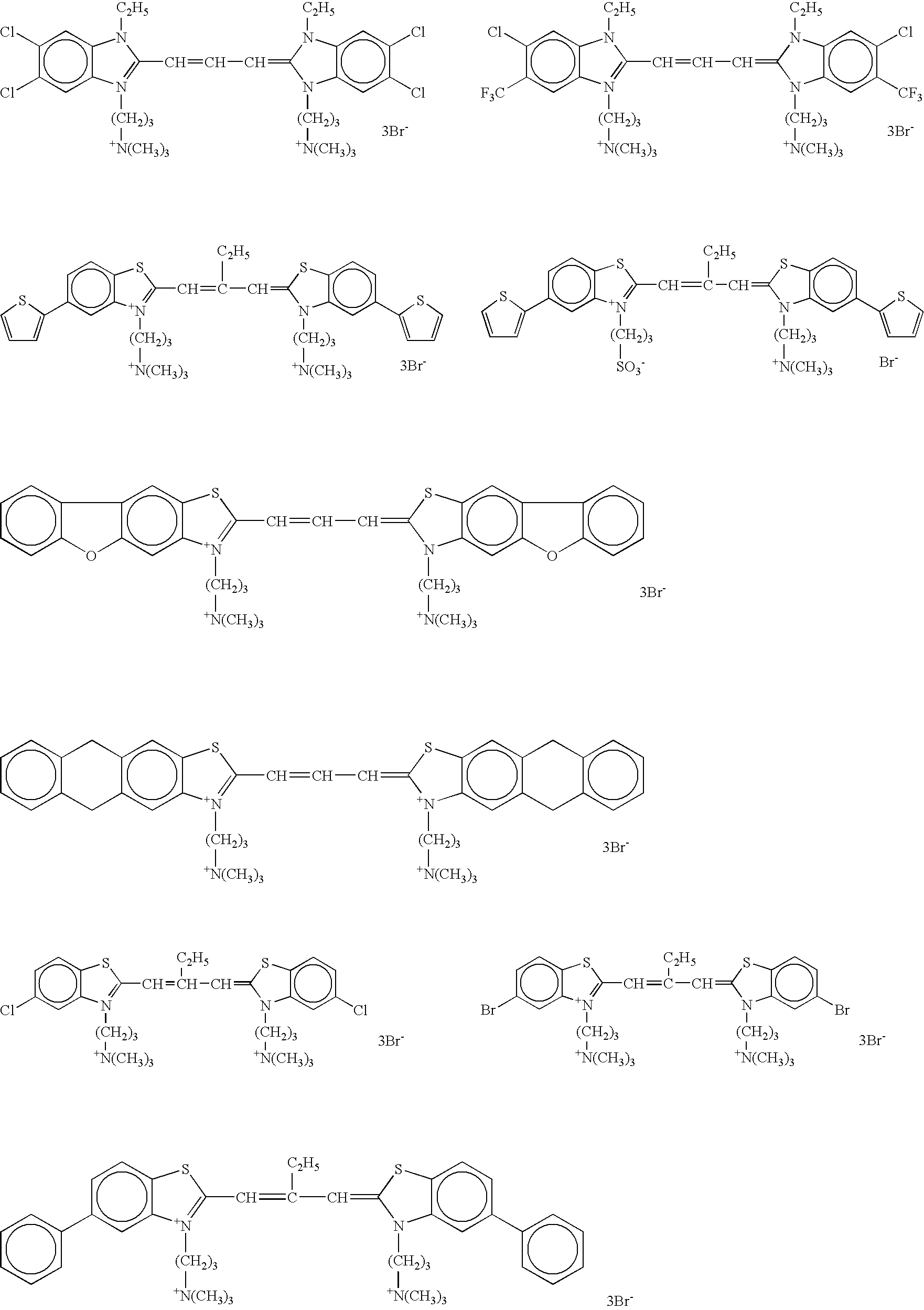Silver halide emulsion and method of preparing the same
a silver halide and emulsion technology, applied in the field of silver halide emulsion, can solve the problems of unfavorable coagulation of emulsion grains at the time of multi-layer adsorption, inability to obtain accurate absorption amount, and difficulty in multi-layer adsorption of sensitizing dyes, etc., to achieve excellent storability, high film speed, and lightening of fog during storage
- Summary
- Abstract
- Description
- Claims
- Application Information
AI Technical Summary
Benefits of technology
Problems solved by technology
Method used
Image
Examples
example 1
[0560](Measurement of the Amount of Dye Adsorbed on Silver Halide Grains)
[0561]The amount of dye adsorbed was determined by carrying out centrifugal sedimentation of an obtained liquid emulsion at 4000 rpm for 10 min, subsequently effecting freeze drying of the thus obtained deposit, thereafter adding 25 mL of a 10% aqueous sodium thiosulfate solution, 12.5 mL of DMF and methanol to 0.02 g of dried deposit so that the total volume became 50 mL and finally analyzing the resultant solution by high-performance liquid chromatography, thereby identifying the concentration of dye.
[0562]The monolayered saturated adsorption amount of dye on silver halide grains was estimated through determining of the adsorption isotherm of each dye as described herein in the section “DETAILED DESCRIPTION OF THE INVENTION”.
[0563](Measurement of Light Absorption by Microspectroscopy)
[0564]In the measurement of the light absorptivity and intensity of light absorption of each individual silver halide grain, a ...
example 2
[0645](Preparation of Emulsion EGA-7 of Comparative Example and Emulsions EGA-8 to -15 of Present Invention)
[0646]Emulsions EGA-7 to -10 were prepared in the same manner as in the preparation of emulsion EGA-6 of Example 1 except that the amount of gelatin-3 added to just before desalting washing was changed. Further, emulsions EGA-11 to -13 were prepared in the same manner as in the preparation of emulsion EGA-6 of Example 1 except that gelatin-4 to -6 were substituted for the gelatin-3.
[0647]Still further, emulsions EGA-14 and -15 were prepared in the same manner as in the preparation of emulsion EGA-6 of Example 1 except that the addition of gelatin-3 was performed after desalting washing in place of performing before desalting washing and that the amount thereof was changed in two ways. These emulsions are emulsions wherein the proportion, type and addition timing of gelatin having its —NH2 group chemically modified were changed from those of emulsions EGA-3 and -6.
[0648]In this...
example 3
[0653](Preparation of Emulsions EGB-5 to -7 and EGB-8 to -12 wherein the Method of Desalting Washing and the Content of Anionic Surfactant were Changed from those of Emulsion EGB-1 of Comparative Example and Emulsion EGB-3 of Present Invention)
[0654]Emulsions EGB-5 to -7 and EGB-8 to -12 were prepared in the same manner as in the preparation of emulsions EGB-1 and EGB-3 of Example 1 except that the method of desalting washing and the content of anionic surfactant were changed.
[0655]With respect to the method of desalting washing in the preparation of emulsions, the dialytic method using a semipermeable membrane conducted in Example 1 was changed to three ways, namely, to the coagulation sedimentation method wherein no anionic surfactant was employed and the coagulation sedimentation methods wherein respective use was made of anionic surfactants SA-40 and SA-41 mentioned as examples herein in the section “DETAILED DESCRIPTION OF THE INVENTION.”
[0656]In the performing of the coagulati...
PUM
 Login to view more
Login to view more Abstract
Description
Claims
Application Information
 Login to view more
Login to view more - R&D Engineer
- R&D Manager
- IP Professional
- Industry Leading Data Capabilities
- Powerful AI technology
- Patent DNA Extraction
Browse by: Latest US Patents, China's latest patents, Technical Efficacy Thesaurus, Application Domain, Technology Topic.
© 2024 PatSnap. All rights reserved.Legal|Privacy policy|Modern Slavery Act Transparency Statement|Sitemap



